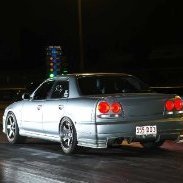Drag GT-R Cooling system Q's
Announcements
-
Similar Content
-
Latest Posts
-
Exactly how each part works and how they all work together to make the engine function. That's all I'd need to do a basic build. Maybe how forced induction works. I probably need to learn some of the maths behind it all as well.
-
Youtube mate. What 'in depth' are you looking for ?
-
I've watched a basic videos on how a petrol car engine works. It would be good to find some more in depth stuff. I plan to do a few builds in the future and I would like to know how I can get hands on instead of sending it into a shop all the time.
-
By Dose Pipe Sutututu · Posted
I wouldn't run it post throttle. You might run into scenarios where on partial throttle, pre throttle there is more pressure than post. Anywhere before the throttle and after the turbo.








Recommended Posts
Create an account or sign in to comment
You need to be a member in order to leave a comment
Create an account
Sign up for a new account in our community. It's easy!
Register a new accountSign in
Already have an account? Sign in here.
Sign In Now